The coldest climate calls for zone 2 trees & shrubs, the most frost-resistant plants of all.
When you start growing trees & shrubs seriously in North America, you will quickly get accustomed to hardiness zones.
Plant hardiness zones indicate the minimum 10-year average temperature during winter.
This is important to know because some plants will get considerably damaged or die if they are exposed to extremely cold temperatures.
Hardiness Zone Map
You can see what zone you live in by looking at USDA’s plant hardiness zone map.
You might be situated in a great area for growing almost any plant and tree or you might be like me, not so lucky and situated in a zone 2 area.
I live in the Abitibi region of Quebec, which is roughly zone 2A and 2B. Canada’s plant hardiness zones.
It’s unfortunate because I planned to grow all sorts of fruit and nut trees but then I had to accept the hard truth: They won’t fruit out here. The growing season is just too short and winter frost can seriously damage them.
When I looked, I didn’t find any large compiled list of zone 2 trees out there. This gave me a great chance to dig deeper into books and ask experts, so I decided to make a great guide for other people like me.
This can give you ideas if you want to start a tree plantation, a nursery, or a landscaping company. Alternatively, this can be a great resource for all the zone 2 gardeners out there.
Hardiness Zone 2: Trees You Can Grow
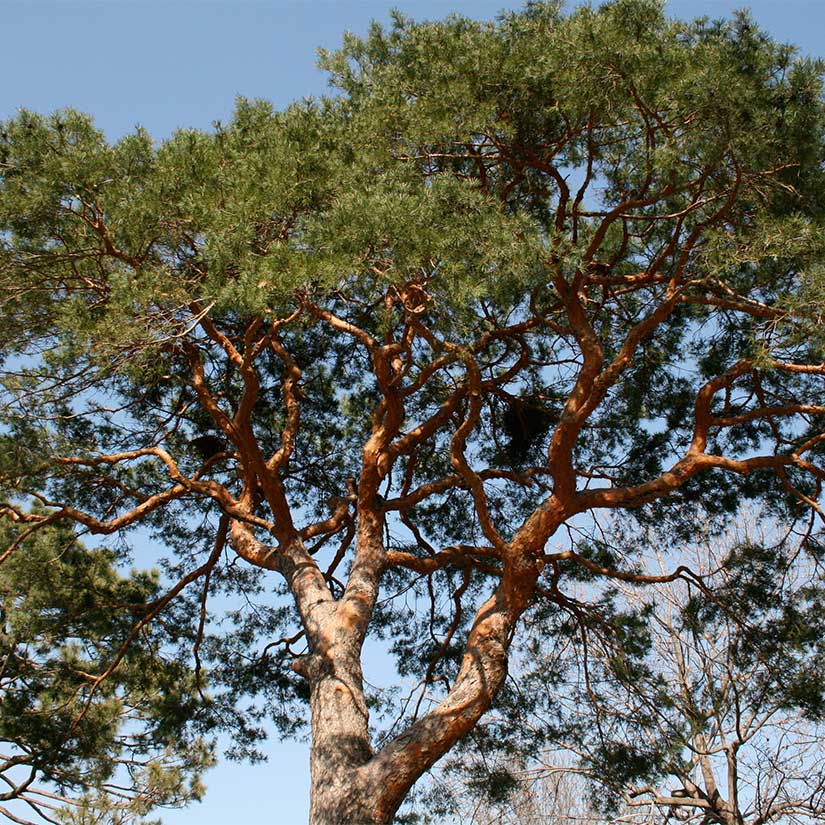
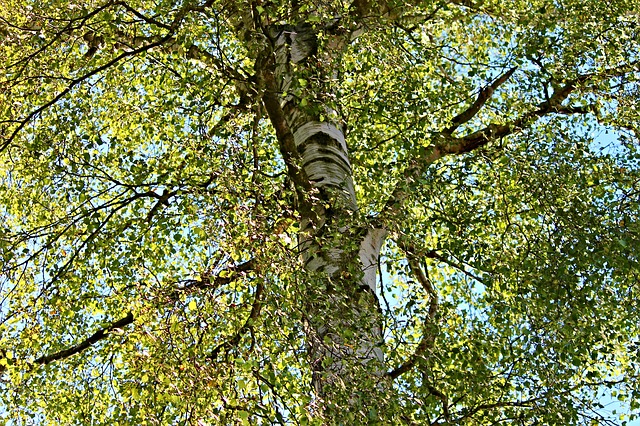
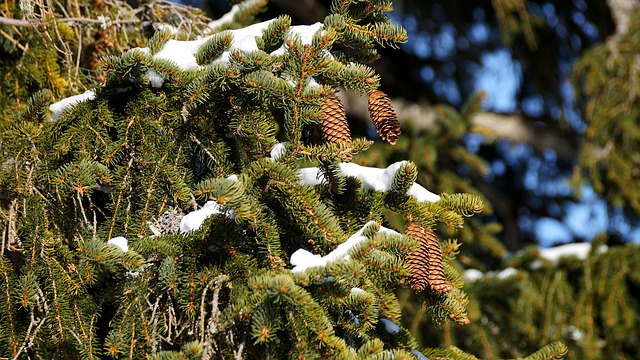
Trees are woody plants that regularly renew their growth. In most cases, trees have one dominant woody trunk with several strong branches spreading outwards. Trees are amongst the most massive and long-living organisms in the world.
The oldest tree in the world, a spruce named Old Tjiko, has a root system of 9,500 years. While another clonal colony of quaking aspen named Pando is estimated at around 80,000 years old.
Trees are most often grown and harvested from their lumber, deciduous trees in general, produce much harder wood than coniferous trees.
What’s the Difference Between Conifers and Deciduous Trees?
Deciduous Trees
- Deciduous trees have leaves that change color, drop during Autumn, and are completely gone during winter.
- They often reproduce using flowers and seeds from nuts or fruits.
Conifers
- Conifers keep their needle-like leaves throughout winter.
- They reproduce using cones and berries.
Conifers are the most cold-hardy trees, they are often the dominating trees in northern forests. But there are also many cold-hardy zone 2 deciduous trees.
Let’s have a look:
Hardiness Zone 2: Leafy Deciduous Trees
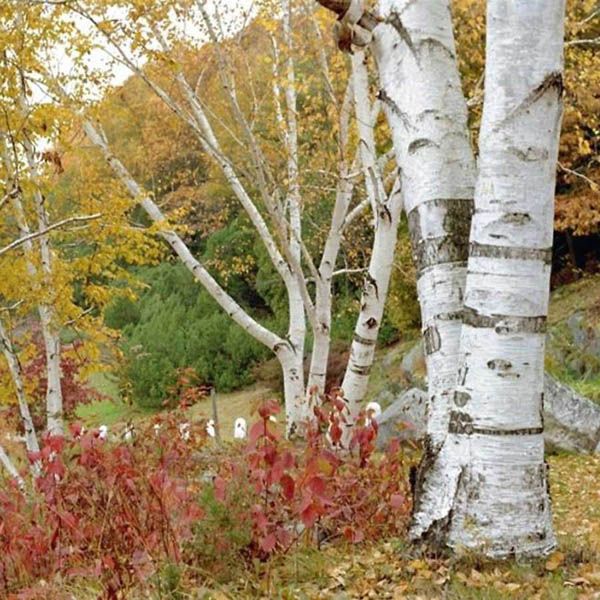
Paper Birch (Betula Papyrifera)
Paper birches are large deciduous trees that grow in full to partial sun and can reach up to 21m of height with a 15m spread.
It’s a fast-growing, robust tree that does well in areas with plenty of snow in the winter.
Paper birches are adaptable, you can grow it in a variety of soils such as sandy and rocky loams. As long as the soil is constantly moist.
Their beautiful bark is also harvested for crafts to make ornaments and branches are often used for interior design.
For more details, look at our guide: How to Propagate Paper Birch.
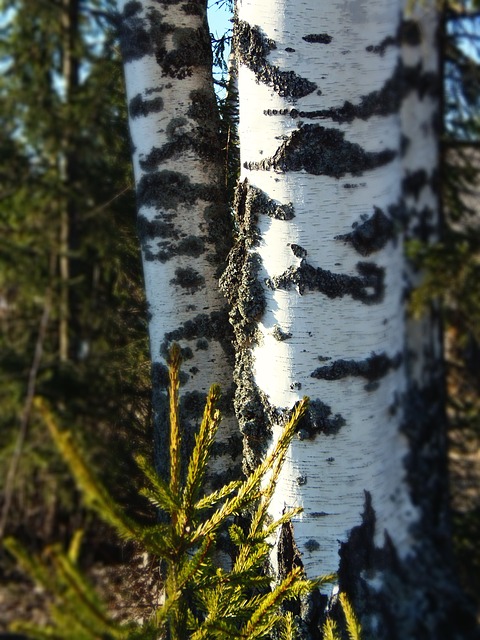
Silver Birch (Betula Pendula)
Silver birches are medium-sized deciduous trees that grow in full to partial sun, they can reach up to 12m in height with a 9m spread.
You will find them growing in sandy, loamy, and rocky soils but some may tolerate drier soils.
It looks beautiful in all seasons, which makes it a great landscaping tree.
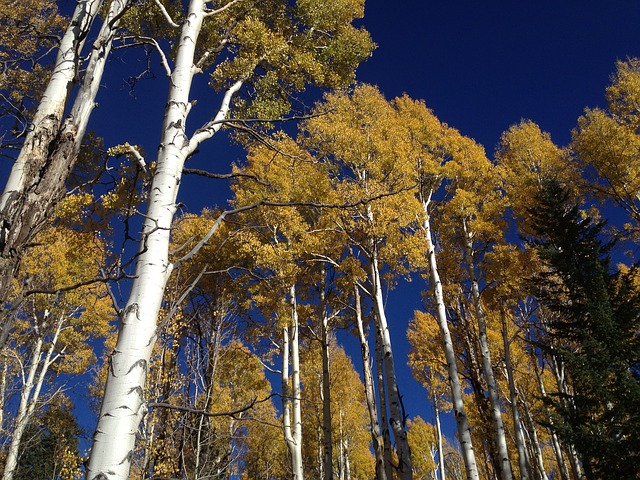
Quaking Aspen (Populus tremuloides)
Quaking Aspen is a zone 2 tree that can grow up to 15m tall with a 9m spread.
They like to grow in full sun, often in rich, fertile, preferably well-drained humus soils. They grow vigorous root systems that produce new tree sprouts.
Quaking aspens get their name from their leaves, with only a slight breeze, they tremble and make a rustling sound that can soothe you.
The highest value you can get from growing aspen is to cut it for timber or fuelwood.
If you grow an aspen grove, you might also attract animals such as deer, moose, and elk that seek shade during the summer.
For more details, look at our guide: How to Propagate Quaking Aspen.
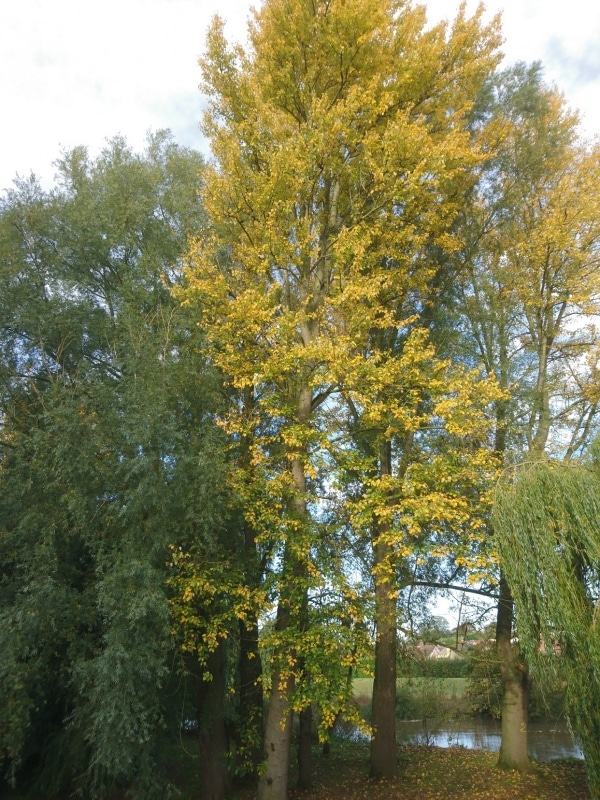
Balsam Poplar (Populus balsamifera)
Balsam Poplars can grow up to a 30m height with a 15m spread.
They like to grow in full sun, on humid, mineral-rich soils.
Balsam poplars produce red coned-shaped flower clumps in April and May.
They reproduce quite quickly by sending up shoots through their root system. With a prolific shallow root system, balsam poplars are ideal trees to prevent erosion and remediate contaminated soils.
Their pleasant aroma makes for a great windbreak, balsam poplar is also a valuable timber tree.
For more details, check out: How to Identify & Propagate Balsam Poplar.
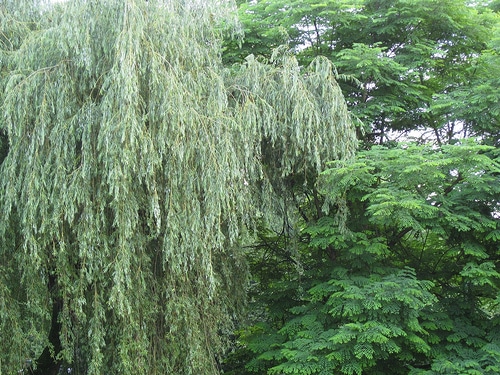
White Willow (Salix alba)
White willow was introduced to America from Europe and Central Asia. It can grow up to 24m in height with a 20m spread.
They grow in full sun to partial shade, generally in loamy soils.
White willows are among the first trees to produce leaves in the spring and also among the last trees to shed their leaves in fall.
They are wonderful trees to grow along rivers and ponds as they will fortify the soil against erosion and attract all sorts of wildlife.
Did you know willow bark acts in the same way as aspirin?
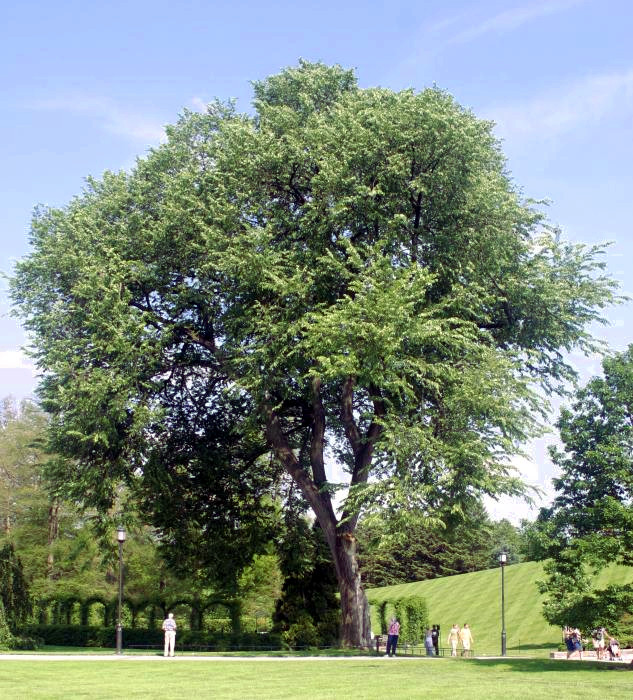
White Elm (Ulmus americana)
Photo by Henry Hartley / CC BY-SA 3.0
White elm is a cold-hardy tree native to North America. They are massive trees that can reach up to 30m in height with massive crowns of up to 27m wide.
The American elm occurs naturally in an assortment of habitats, most notably rich bottomlands, floodplains, stream banks, and swampy ground, although it also often thrives on hillsides, uplands, and other well-drained soils.
“The American elm is highly susceptible to Dutch elm disease (DED), which is a fungal disease transmitted by bark beetles, including the American Bark Beetle. The beetle eats on a diseased tree and then, when it moves to a new one, spreads the disease.”
For more details, check out: How to Propagate White Elm.
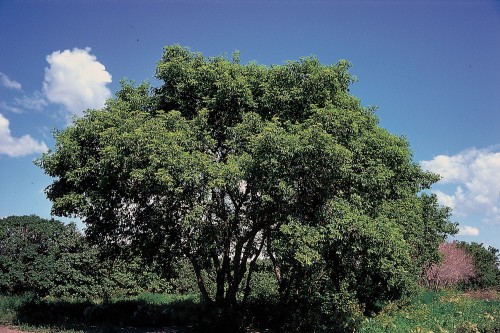
Boxelder Maple (Acer Negundo)
Boxelder Maple or Manitoba Maple is a hardy, fast-growing maple tree that can reach as high as 25m in height with a 12m spread.
They will grow in full sun to partial shade on nearly all sorts of soil.
They are a great choice for landscaping trees in urban areas since they provide amazing shade and tolerate pollution.
The leaf thickets Manitoba Maples create are almost impenetrable by sunlight, so they are best planted away from other plants that require full sun.
If you want to multiply your maple trees, check out our guide on how to propagate boxelder maple.
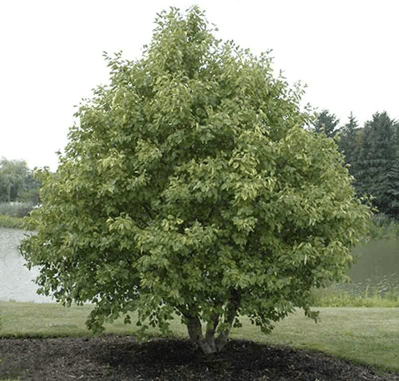
Speckled Alder (Alnus Incana Rugosa)
Speckled Alder is a coniferous medium-sized tree that can grow up to 8m in height with a 4m spread.
Speckled Alder has a shallow root system that allows it to quickly reproduce by suckering.
They like to grow in all sorts of soils: clayey, sandy, gravelly, and loamy, but they spread like a weed, especially in wet areas.
Speckled alder has been used by Native Americans as a medicinal plant in the past to treat a range of ailments.
It’s great to grow alongside streams and ditches to prevent erosion and act as windscreens.
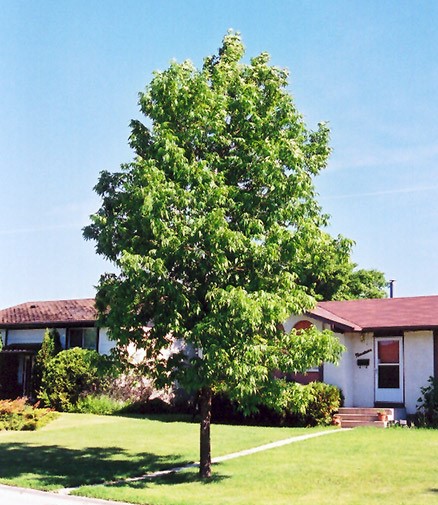
Black Ash (Fraxinus nigra)
Black ash is a fairly small tree, it can grow up to 20m in height with a 4m spread.
It likes to grow in poorly drained wet soils like peat bogs, along streams, and flooded lands.
It has had value throughout history for basket-making, especially within local North American tribes.
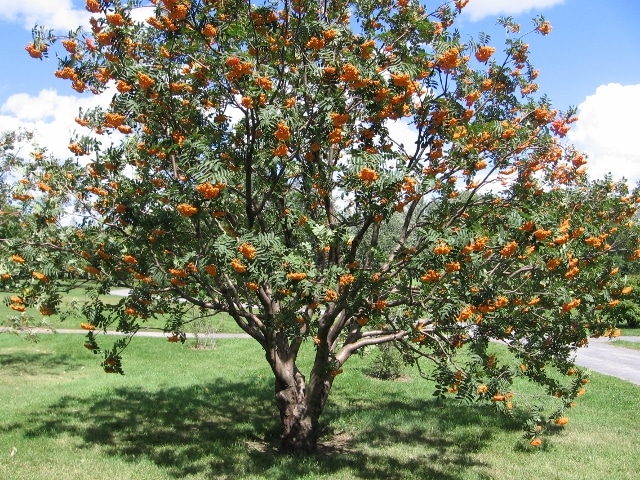
Mountain Ash (Sorbus Americana)
Mountain Ash can grow up to 13m in height with an 8m spread.
They grow well in clay, sandy, and loamy soils as long as their fairly wet and well-drained – Full Sun.
In spring, mountain ash produces dense clusters of white flowers that bloom at the end of the branches.
In summer, the tree will create bright red berry clusters that can attract migrating Bohemian Waxwings by the thousands.
During fall the leaves will turn a crimson red, making mountain ash a marvelous landscaping tree.
For more details, look at our guide: How to Propagate Mountain Ash.
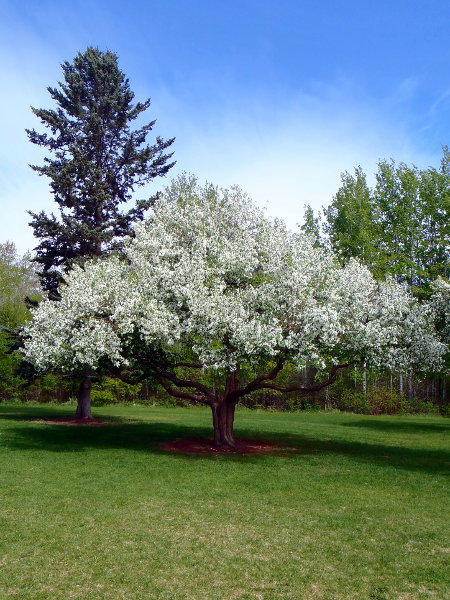
Siberian crabapple (Malus baccata)
Siberian Crabapple can grow up to 8m in height with a similar spread.
You want to plant them in full sun in well-drained moist soils.
Siberian crabapple produces a white flower during spring and fruits later during summer.
They make for great conservation and landscape trees as they are beneficial to wildlife and bring in pollinators.
For more details, look at our guide: How to Propagate Siberian Crabapple.
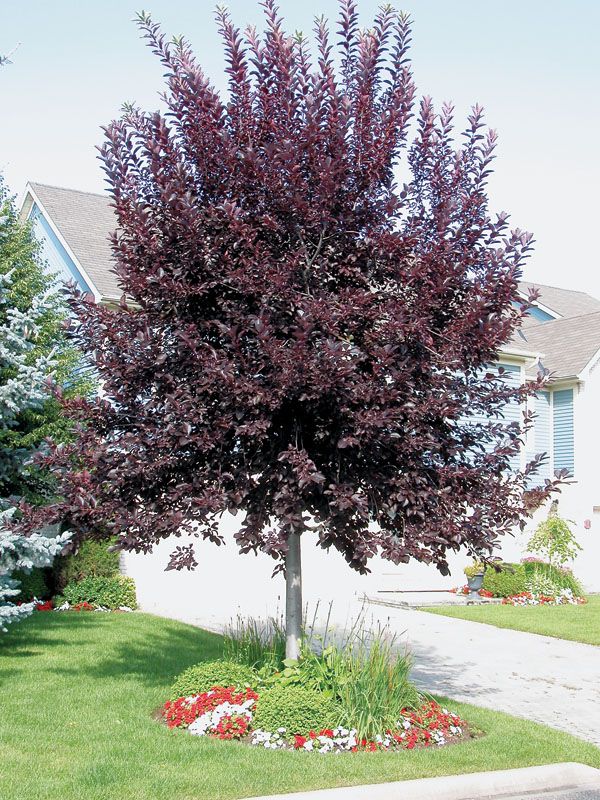
Chokecherry (Prunus virginiana)
Chokecherries love to grow in moist soil, they can reach up to 9m in height with a 6m spread. Grows in partial to full sun.
During spring, prunus virginana will bloom white flowers that have a strong, sweet fragrance.
Soon after it will produce bright red fruits that have a bitter taste but attract birds. Some people use these berries to make homemade wines.
Chokecherries are perfect if you want to add beautiful colors to your landscape and attract beneficial birds that might help control any pests in your area.
They primarily make good landscaping trees.
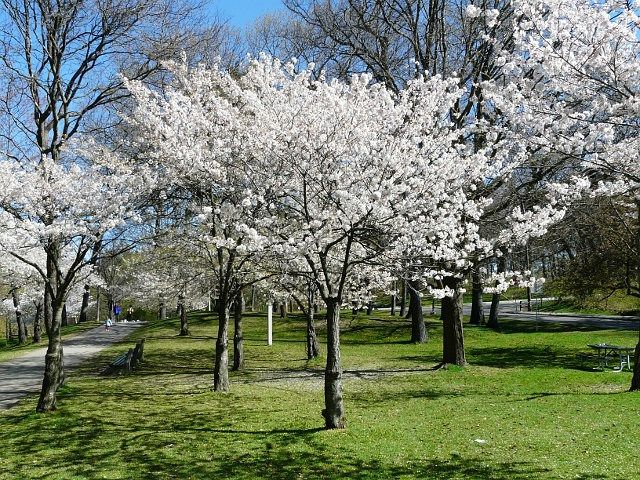
Bird Cherry (Prunus Pensylvanica)
Bird Cherry produces bright red cherries that birds love to eat, and they also blossom beautiful white flowers during early Spring.
Pinus Pensyvanicus are quite small trees and grow up to 15m in height with nearly as much in spread.
Bird Cherry like to grow in full sun in clay and sandy soils, generally well-drained, mineral-rich soils.
They are one of your top choices for landscaping trees since they will attract birds that are beautiful to see and act as pest control for your other plants.
Hardiness Zone 2: Evergreen Conifers
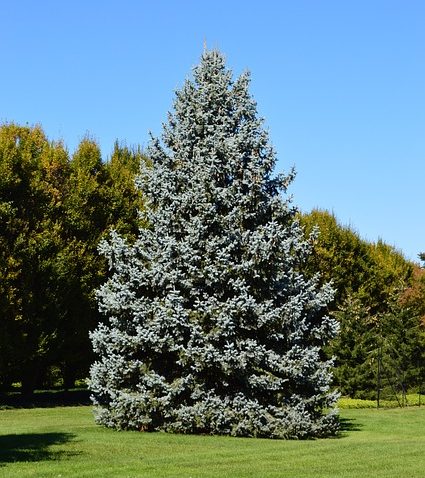
Blue Spruce (Picea pungens Engelm)
Blue spruce is native to North America and is an extremely hardy tree, living up to zone 1.
They can grow up to 50m tall with a 10m spread. Blue Spruce likes to grow in full sun in a variety of soils such as acidic, loamy, moist, rich, sandy, well-drained, and clay soils.
Blue spruces were originally discovered in the late 1800s in mysterious meadows and streamsides high up in the Rocky Mountains.
Since then its beautiful blue needles have attracted the attention of many far and wide, and it is a very common landscaping tree.
The tree provides shelter for birds such as siskins, nuthatches, and crossbills.
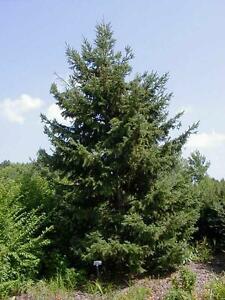
White Spruce (Picea glauca)
White Spruce can grow up to 30m in height with a 12m spread.
They like to grow in full sun but also tolerate partial shade. You can best grow them in slightly acidic, well-drained loam soil but also in sand and clay soils.
White spruce creates valuable lumber often used in the construction of mobile and prefab homes, crates, furniture, pallets, and more.
This makes them a great choice if you want to reforest logged areas.
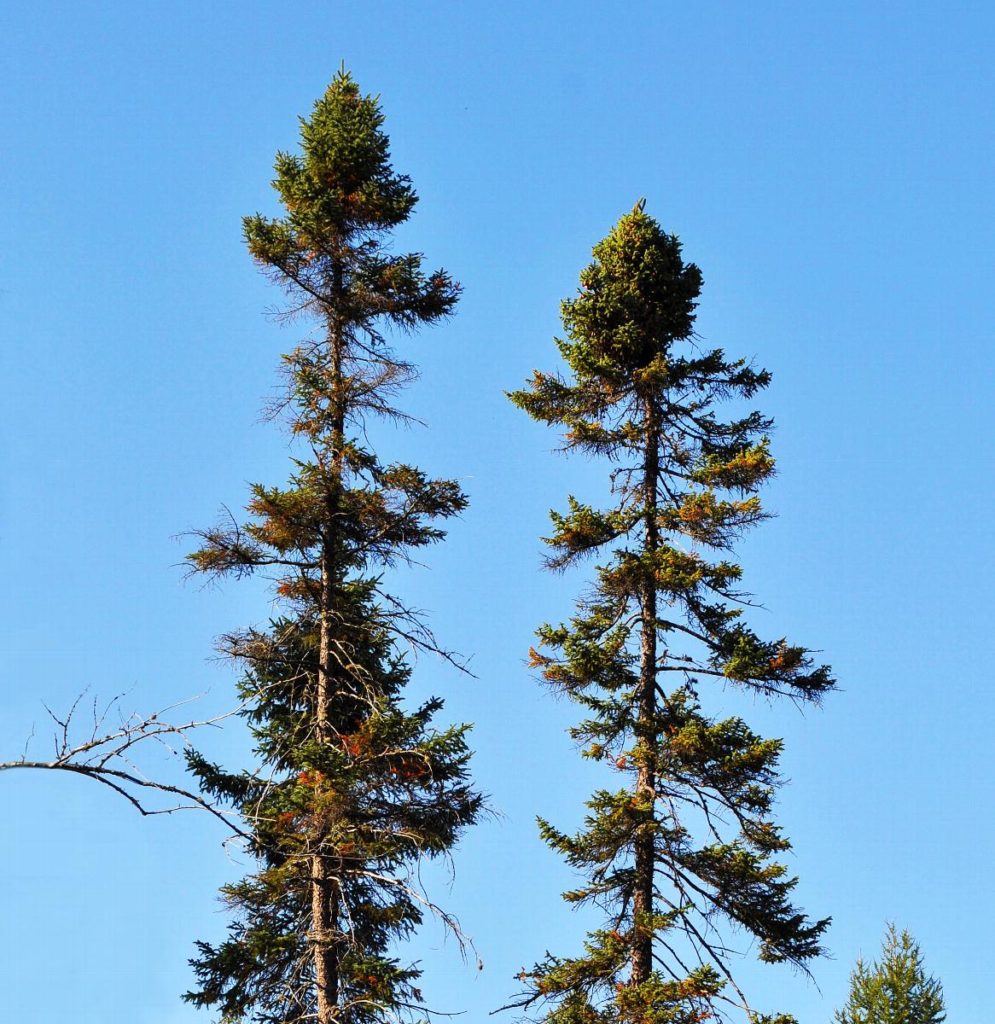
Black Spruce (Picea Mariana)
A black pine forest is very distinguishable, the trees grow slowly but straight up and can reach up to 20m in height with a small 4m spread.
Grow well on wet, sandy, loamy clay soils, often found near bogs, and swamps but can also grow in dry soils.
It’s quite a valuable fast-growing timber tree for its straight grain. Often used as lumber, pulpwood, construction plywood, and containers.
Since it is almost orderless and tasteless, black pine is especially useful for food containers.
For more details, look at our guide: How to Propagate Black Spruce.
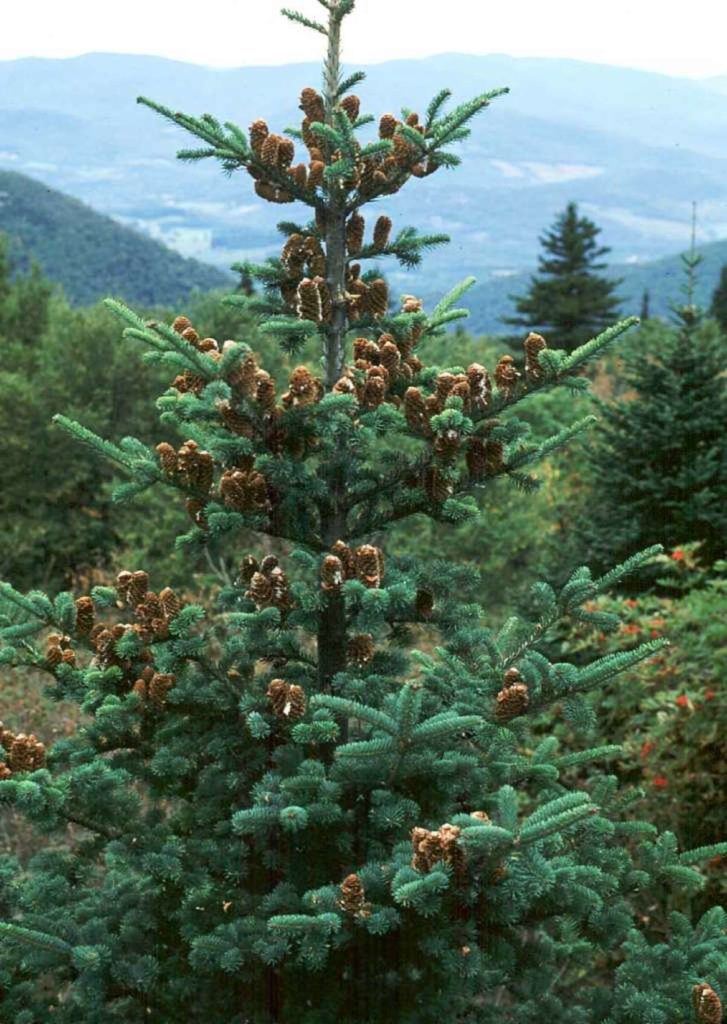
Balsam Fir (Abies Balsamea)
Balsam firs are the classic Christmas trees. They like to grow in acidic silt and stony loam, in well-drained areas that are cool and moist.
They can grow up to 25m in height with a 7m spread.
Since it is so sought after during Christmas time, balsam firs are a great choice when choosing profitable trees to farm.
For more details, check out: How to Identify & Propagate Balsam Fir.
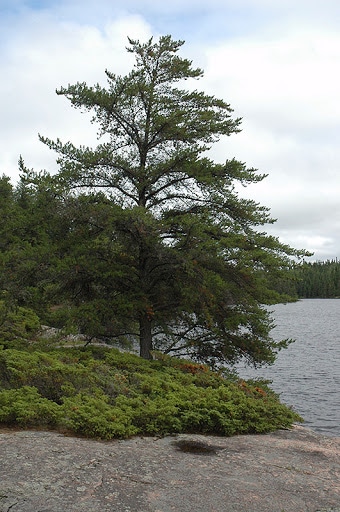
Jack Pine (Pinus banksiana)
Jack Pine is a zone 2 tree that can grow up to 22m in height with a spread of up to 9m.
It likes to grow in full sun to partial shade, Jack Pine will grow in a variety of soil and prefer loam but are especially hardy in drier, sandy soils.
Jackpine is another valuable fast-growing timber tree. It’s often used as pulpwood, poles, and small sawlogs.
For more details, check out: How to Propagate Jackpine.
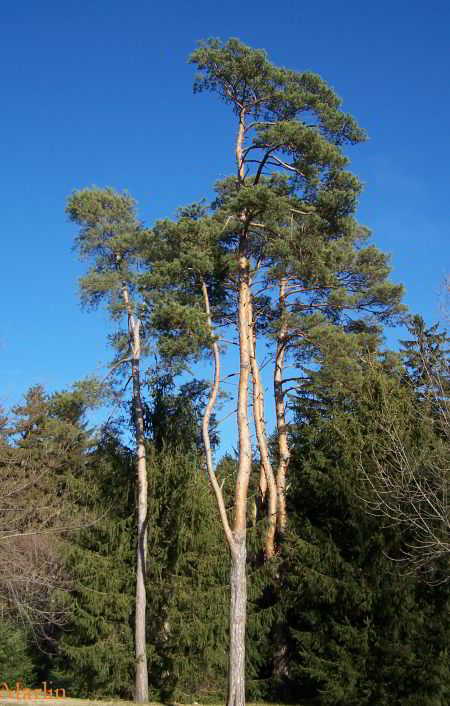
Scots Pine (Pinus Sylverstris)
Scots Pine is a very hardy tree introduced from Eurasia. It can grow up to 40m in height with a spread of 12m.
It likes to grow in full sun on rocky outcrops, sandy soils, peat bogs, and close to forest limits.
Scots Pine straight trunk makes it a valuable tree for timber. The wood is used for pulp and sawn timber products.
Historically, Scots pine has been a favorite for choices of Christmas trees.
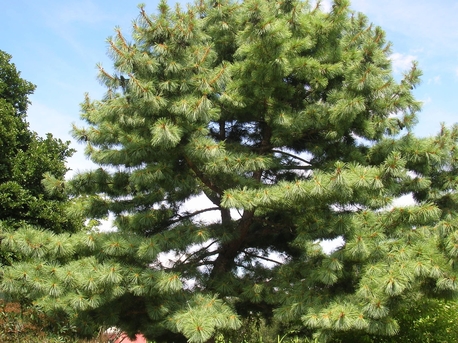
Eastern White Pine (Pinus Strobus)
Eastern White Pines are sturdy towering conifers that can grow up to 40m in height with a 20m spread.
Grows fast and well in full sunlight. It can grow in moist or dry soils such as sand and sandy loam.
It’s a beautiful landscape tree and produces great lumber, once used to build masts for the Royal Navy.
For more details, check out: How to Propagate White Pinus.
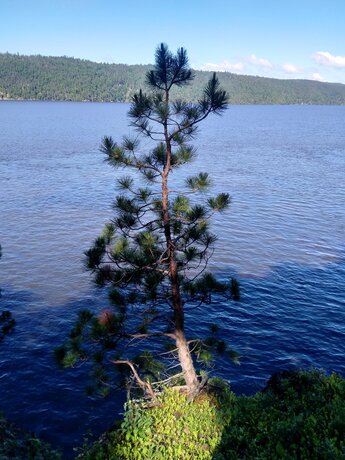
Red Pine (Pinus resinosa)
Red pine has a reddish bark that forms large plates at maturity that flake off. It has long straight needles that are always grouped in twos.
Red pine likes to grow around rocks or less fertile lands, often found with white and jack pine. It’s found spread across eastern North America. Red pine grows best under full sun in well-drained soiled mineral-rich soil.
Red pine can grow as high as 60m in height with a crown of up to 10m.
For more details, check out: How to Identify & Propagate Red Pine.
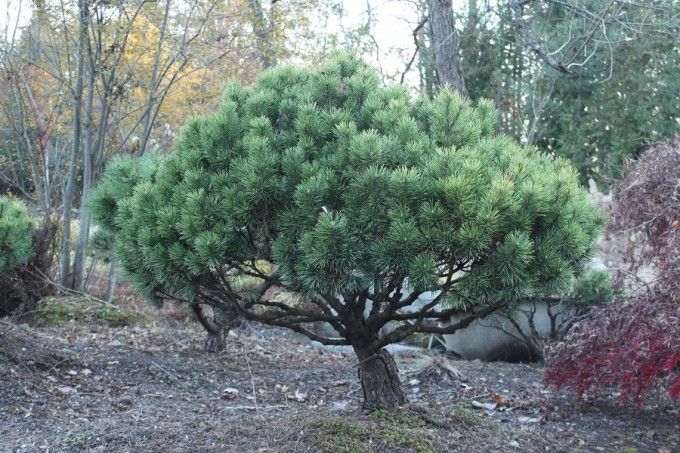
Mugo Pine (Pinus Mugo)
Mugo Pines are small coniferous trees introduced to North America from Europe.
Mugo Pines are smaller versions of their pine giants and usually spread horizontally rather than grow vertically.
They can grow up to 6m in height with a larger spread of 8m.
Mugo Pines like to grow in full sun to partial shade on sandy or clayey soils, with no particular preference for acidity, as long as the soil is moist and well-drained.
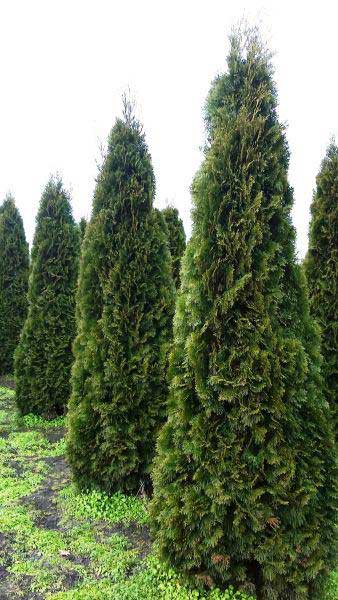
Arborvitae (Thuja Occidentalis)
Arborvitae is awesome landscaping conifers that grow up to 15m in height with a 5m spread.
They like to grow in full to partial sun on almost any type of well-drained, organic soil.
Arborvitae is fast-growing and low care which makes them a top choice for many landscapes, especially as privacy screens or hedges.
They have beautiful red-brownish bark, Thuja wood also has a nice scent which makes it desirable in crafts.
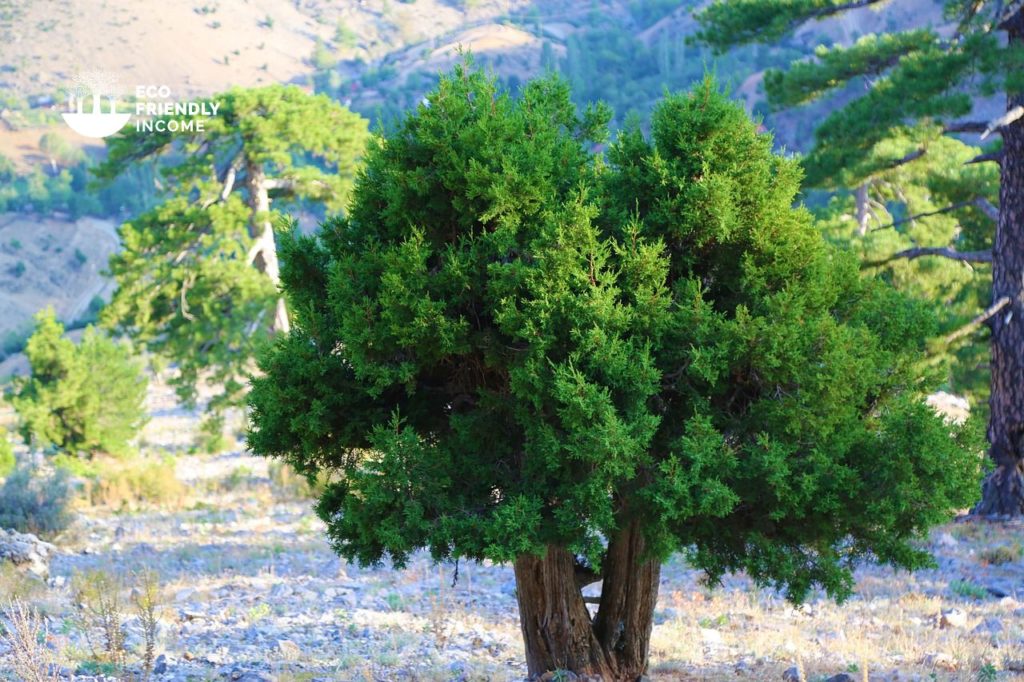
Rocky Mountain Juniper (Juniperus scopulorum)
Rocky Mountain Juniper is a great, long-living conifer that grows from 20 to 30 feet in height and 8 to 12 feet in spread.
It likes to grow in well-drained, sandy, gravelly, loam, or clay soil. Full sun to partial shade.
They look good all year long and provide food & shelter for animals.
For more details, check out: How to Propagate Rocky Mountain Juniper.
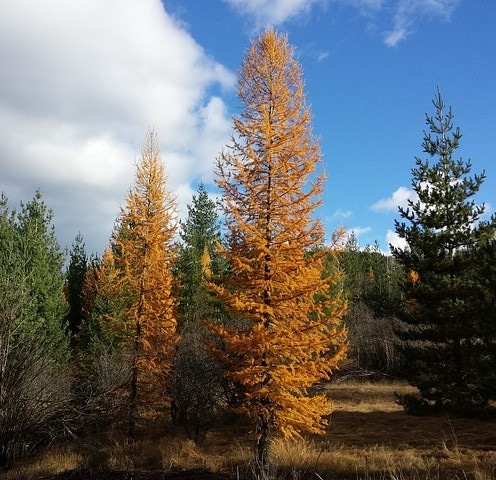
Tamarack Larch (Larix Laricina)
Tamarack Larch is famous for its beautiful golden colors during autumn. They like full sun and can grow up to 21m with a 9m spread.
Tamarack Larch is grown in moist, acidic, and well-drained soils. It cannot really grow in dry conditions.
Larch cones look like small purple flowers first, then expand and release the seeds.
They do drop their needles during autumn so technically they are a deciduous conifer.
It’s often planted near creeks, rivers, or generally moist areas. Apart from its landscaping use, Larch wood is actually a valuable waterproof timber for building boats and residences.
For more details, check out: How to Propagate Tamarack Larch.
Dwarf Alberta Spruce is a really cold hardy tree that’s ideal for landscaping. It won’t grow much higher than a few meters high.
It prefers to grow in well-drained acidic sand, clay, and loam. Full sun or partial shade is both ok.
For more info, check out: How to Propagate Dwarf Alberta Spruce.
Hardiness Zone 2: Shrubs You Can Grow
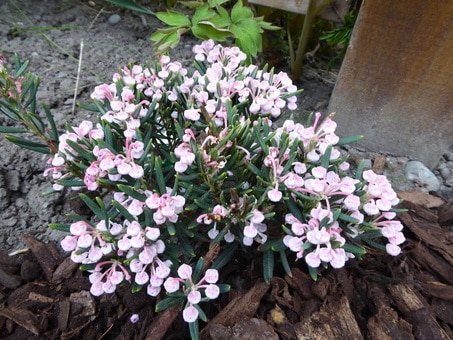
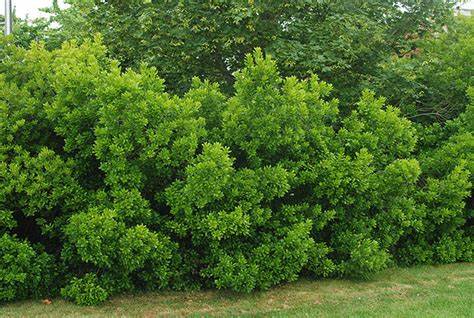
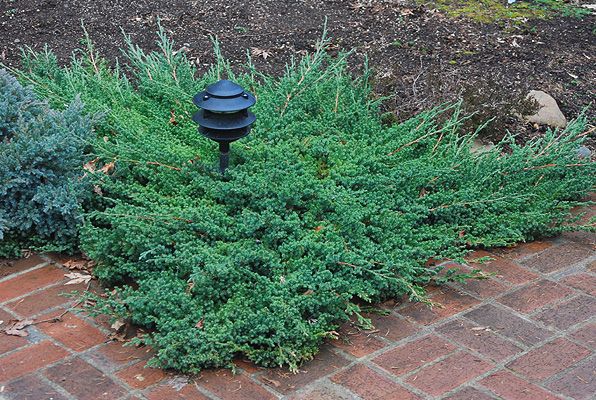
Shrubs are any plants that develop several woody stems with none of them being dominant. They rarely grow above 3m in height but often spread out along the ground.
They make great accents on your landscape and can be used as natural fences, or alternatively grown to harvest branches for decorations or basket making.
Like almost any plant, some shrubs have leaves with medicinal properties. Many also produce edible berries that can be harvested and sold.
Hardiness Zone 2: Fruit Producing Deciduous Shrubs
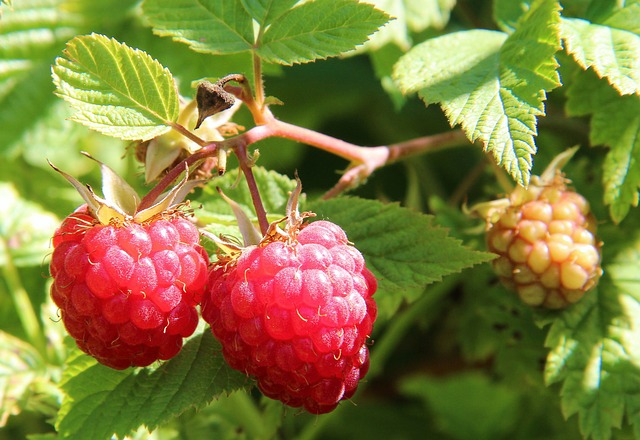
American Raspberry (Rubus Idaeus – Strigosus)
American Raspberry is a zone 2 berry-producing shrub that can grow up to 2m in height with a spread of several meters.
Raspberries are ready to pick mid-summer, it has great value as a food bush but not so much as a landscaping bush because the stems have thorns.
It grows in full sun to partial shade in sandy, loamy, clayey soils, as long as it’s well-drained and moist.
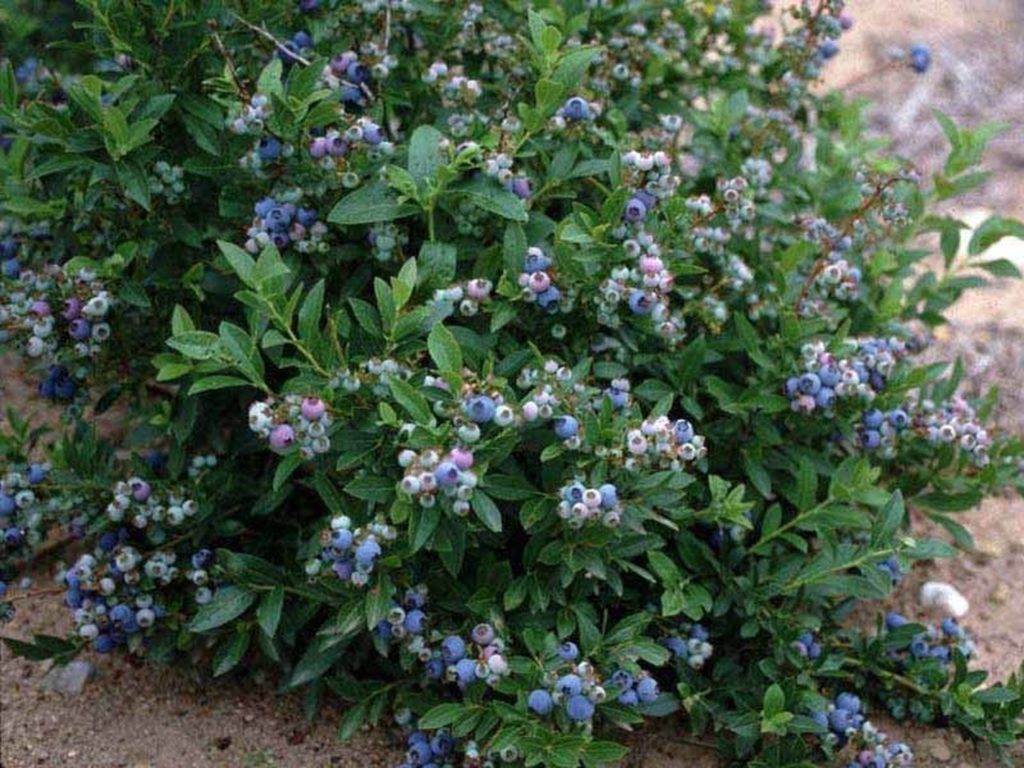
Lowbush Blueberry (Vaccinium angustifolium)
Lowbush blueberries are small shrubs that grow up to 1m in height and sometimes sprawl several meters.
Unlike the highbush blueberries, they are most resistant to cold weather and produce smaller but much sweeter berries.
Lowbush blueberries grow best in full sun on well-drained, organic, sandy soils.
Great bush to keep for harvesting fruits from mid-summer to fall.
For more info, check out: How to Propagate Blueberry
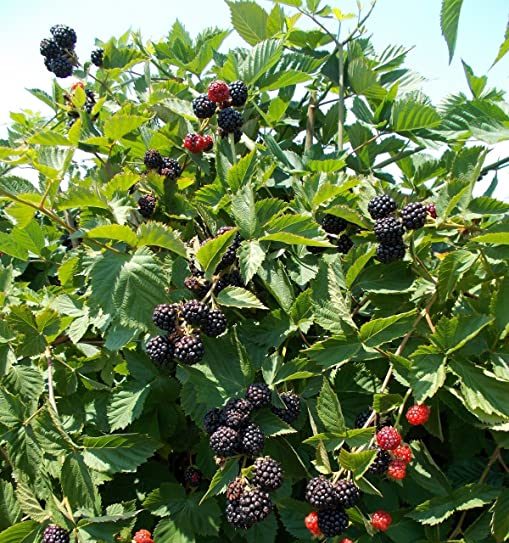
Blackberry (Rubus L. var. ‘Ebony Hardy’)
Blackberries can actually grow as far up as hardiness zone 2 with the Ebony Hardy variety.
Blackberry bushes can grow up to 1m in height with a spread of several meters.
They grow best in full sun but do well in partial to full shade too. Organic, well-drained, loose loamy, or sandy wet soils.
Blackberries are delicious, this bush provides a great food source but is not so good for landscaping use since many varieties have thorns.
The big difference between raspberries and blackberries is that when you pick blackberries, the ‘torus’ (white tip of the stem) comes with it, while for raspberries the ‘torus’ will remain on the plant, giving it a hollow core.
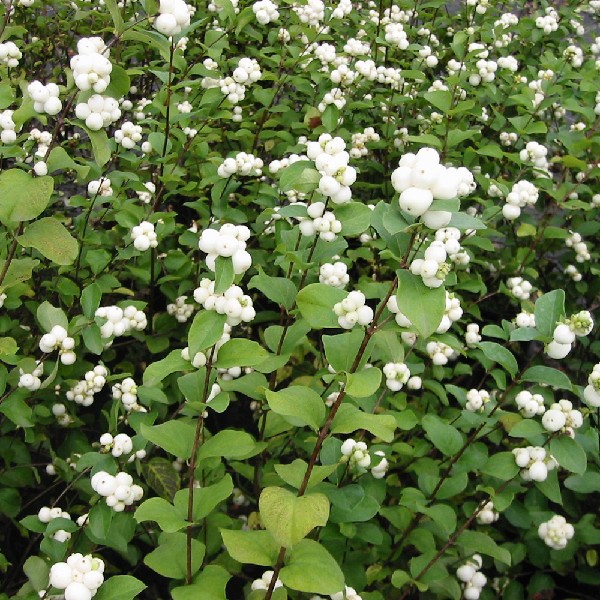
Common Snowberry (Symphoricarpos Albus)
Common snowberry is a flowering berry-producing bush that grows in northern parts of America.
They can grow up to 2m in height with a spread of 4m.
They will grow in full sun to partial shade on a variety of soils. They can endure poorer quality soils but will do best on clay soils. They usually grow well along stream banks on sandy, rocky soils.
The fruit itself isn’t so tasty but provides wildlife value, the bush also produces beautiful small pink flowers.
For more details, check out: How to Identify & Propagate Snowberry (Symphoricarpos albus).
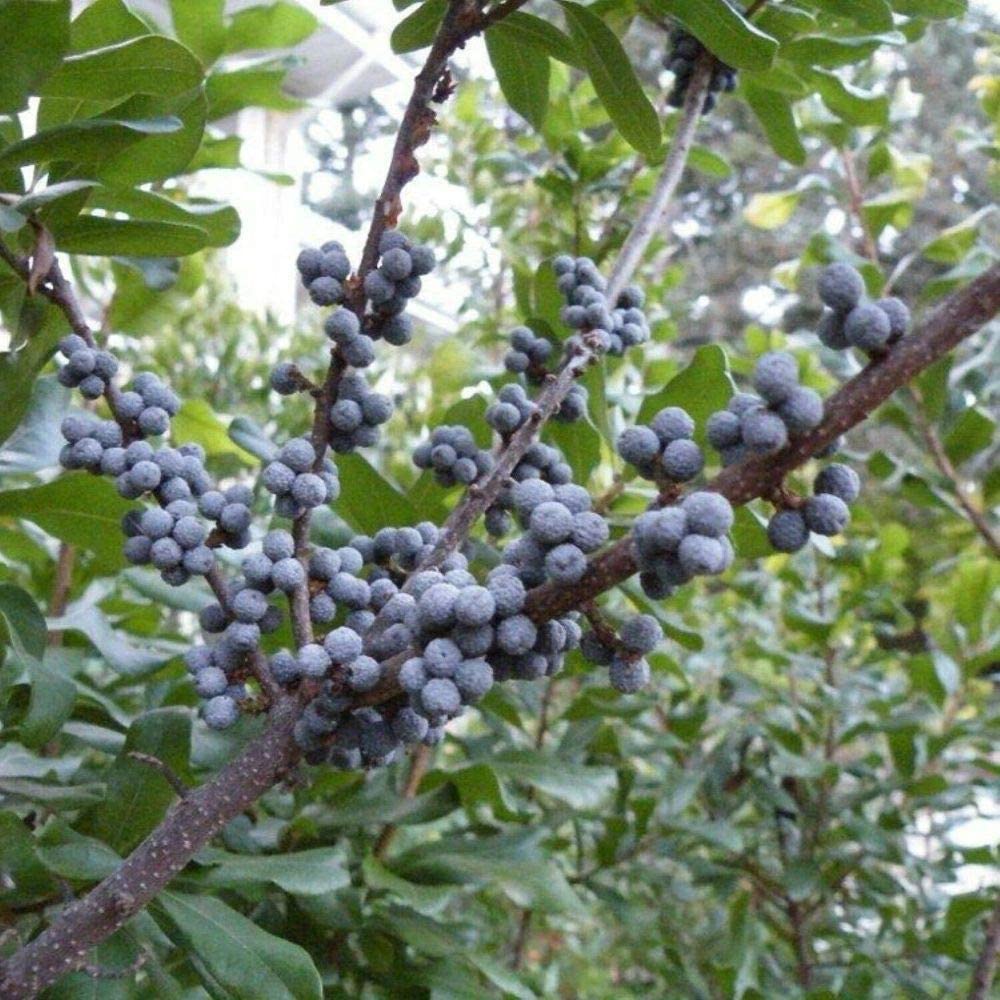
Northern Bayberry (Myrica Pensylvanica)
Northern Bayberries are typically low-lying shrubs but they can grow up to 3m in height. They grow in full sun but tolerate partial shade. They spread quickly by forming colonies.
Northern bayberries often grow in coastal areas, people say their foliage smells a bit like Evergreen.
You can grow them well in difficult spots like acidic, dry, infertile, and sandy soils.
Did you know you can use bayberries to make candles?
They also make attractive thickets and hedges for landscaping purposes.
For more info, check out: How to Propagate Northern Bayberry.
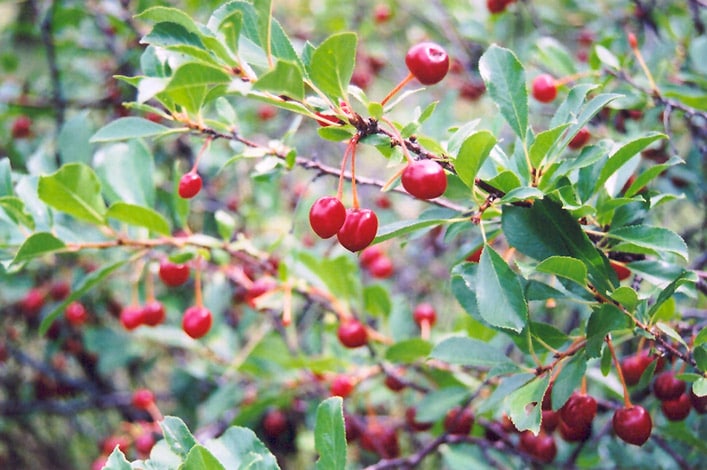
Mongolian Cherry (Prunus fruticosa)
Mongolian Cherry can grow up to 1.5m in height with a similar spread.
It will grow in full sun only, preferably on loam soils.
Mongolian Cherry will produce white flowers in the spring and red cherry-shaped fruits in the summer.
The trees are commonly used as windbreaks on a farmstead and are great for you if want to attract songbirds.
Great landscaping tree to use as a screen, hedge, border, or group planting.
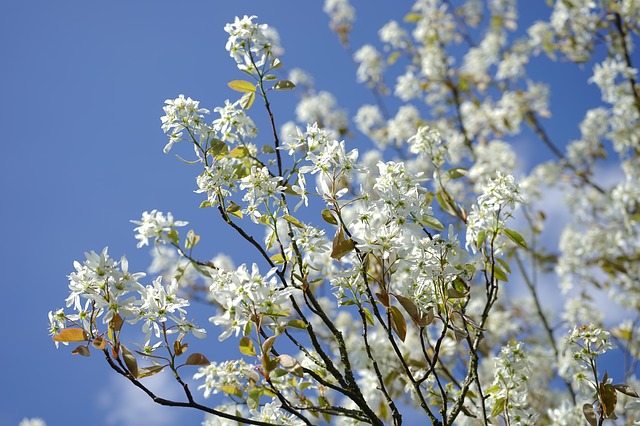
Altaglow Serviceberry (Amelanchier Alnifolia)
The Altaglow variety of Amelanchier is a tall shrub that can grow up to 6m in height with a 3m spread. It is hardy up to zone 1, they produce large white berries that are sweet but bland.
The berries have little commercial value, but the shrubs can be grown in pairs, since they are self-sterile, and sold as beautiful landscaping shrubs.
The genetic branch of this Amelanchier seems to have originated from the Red Deer area of Alberta, where many shrub specimens can still be seen today. Seeds appear to be very rare!
If you want to multiply your Amelanchier plants, check out my guide on how to propagate serviceberry.
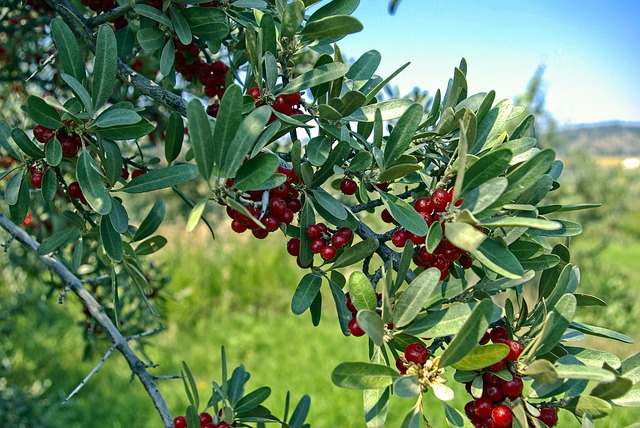
Silver buffaloberry (Shepherdia argentea)
Silver buffaloberry is a durable fruiting shrub that can grow up to 4m in height and spread.
It’s a bush you can grow in full to partial sun, on slightly acidic to alkaline soil.
Buffaloberry has been used to make dye and medicine, but they are also beautiful landscaping shrubs that will attract wildlife.
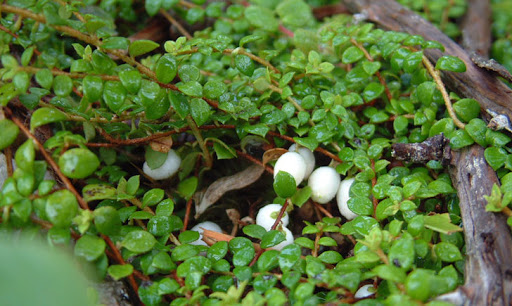
Creeping Snowberry (Gaultheria hispidula)
Creeping Snowberry is a small bush usually found growing in the forest in damp, organic areas, commonly around tree trunks.
The bush usually sprawls across the floor which means it won’t grow higher than 50cm but can spread for more than 1m.
They grow best in full sun to partial shade on humusy, organic, loamy soils, usually in swamps.
If you can grow them near a water source in your yard, they provide a great source of herbs, since the leaves can be used to make delicious minty flavored tea.
The bush won’t produce many berries but give off white little berries with a spectacular wintergreen flavor.
For more info, check out: How to Identify Creeping Snowberry.
Hardiness Zone 2: Berry Producing Coniferous Shrubs
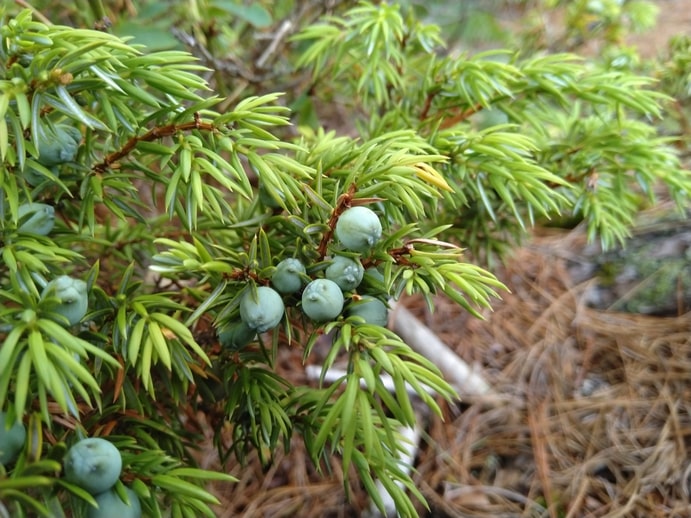
Common Juniper (Juniperus Communis)
Common junipers can grow in a variety of different ways. Some will grow wide and not reach very high while others will grow upwards more like a tree.
They can reach up to 3m equally in height or spread. Common Junipers can grow in almost any kind of soil and prefer full sun.
They have little dark blue-colored berries that attract birds. They have a use in the culinary world for seasoning and infused beverages, some say the berries have considerable health benefits.
Common Juniper berries are also a common ingredient in essential oils and are also found in tea mixes.
Their branches are commonly used in the crafts and decorations industry.
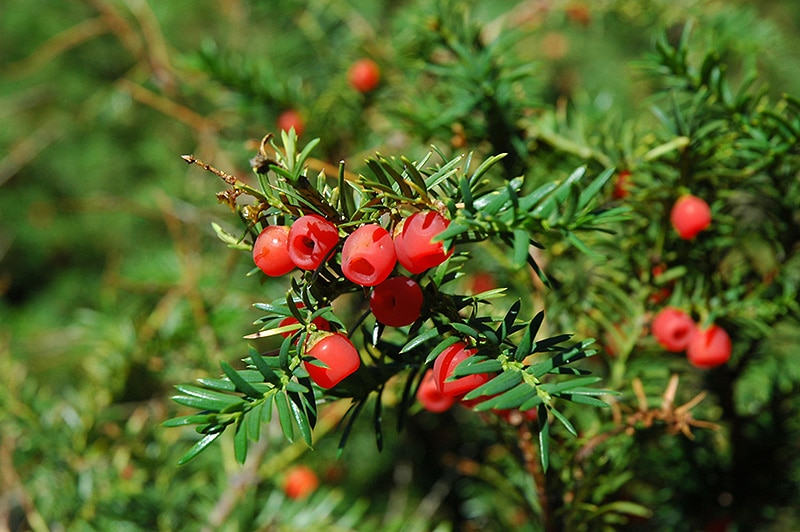
Canadian Yew (Taxus canadensis)
Candian yew will grow from 30cm up to 2m in height with a spread of about 2m.
They like to grow in full sun but are also very tolerant in partial to full shade on alkaline, loamy, and moist but well-drained soils. Candian Yew is great to plant under tall, mature trees.
While Canadian Yew is a poisonous plant, it has a history of being used by Native Americans to treat a range of ailments such as rheumatism, fevers, influenza, expelling afterbirth, and dispelling clots.
The one part of the tree that isn’t poisonous is the bright red berry, loved by deers and moose, they are still edible and have a sweet taste.
They are great landscaping plants to fill in areas around tall trees and attract wildlife.
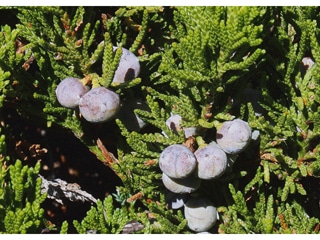
Creeping Juniper (Juniperus Horizontalis) Moench
Creeping Juniper is a small coniferous shrub that can grow up to 30cm tall but with several meters spread.
You should grow them in full sun on well-drained, dry soil with slight alkalinity.
They produce a blue waxy berry with one or two seeds inside. Excellent wildlife value.
Creeping Juniper’s great ground cover means they are excellent desirable landscaping shrubs.
Hardiness Zone 2: Flowering Shrubs
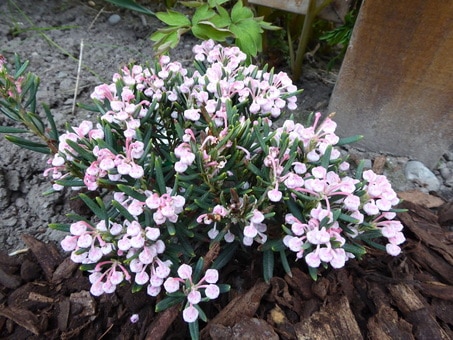
Bog Rosemary (Andromeda polifolia)
Bog Rosemaries like to grow in partially shaded, acidic, damp, and peaty soils. They can grow up to 40cm in height with 30cm spread
Bog Rosemaries make great additions as landscaping shrubs with beautiful bell-shaped flowers that bloom in late spring to early summer.
You can use them to attract beneficial insects such as butterflies and bees.
If you want to take one and multiply it, check out my guide on how to propagate bog rosemary.
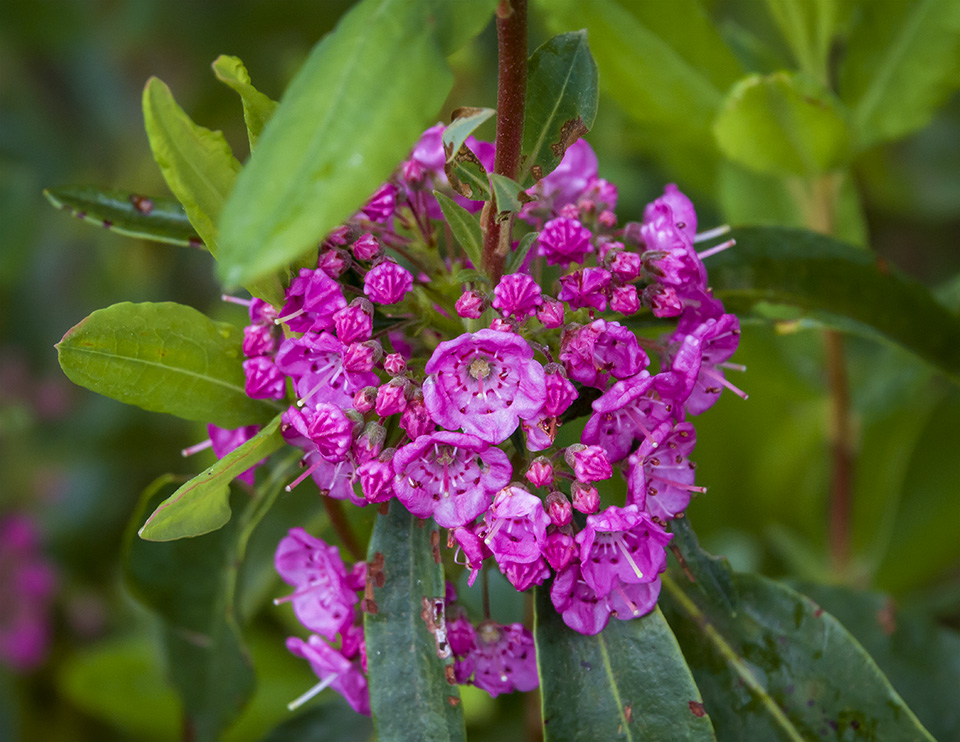
Sheep Laurel (Kalmia Angustifolia)
Sheep Laurel grows up to 1m in height and usually spreads far.
It likes full to partial sun and grows best in rich, moist organic soils, and acidic soils.
Sheep Laurel produces unique bright pink flowers in early summer. They can be used as landscaping plants.
Warning! Kalmia is a poisonous plant, it should not be eaten or kept around animals such as sheep.
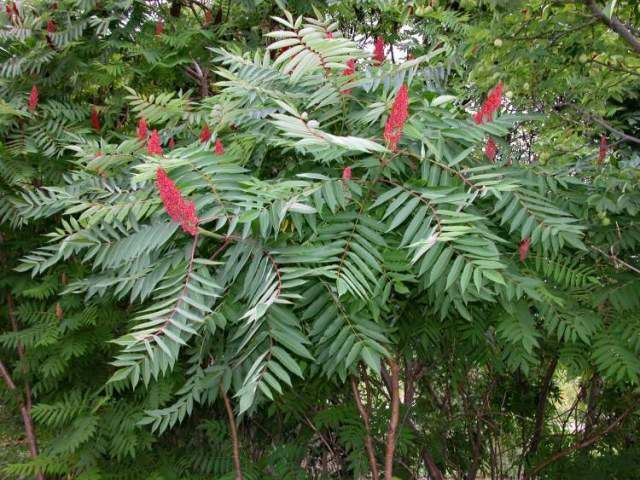
Smooth sumac (Rhus glabra)
Smooth sumac can grow up to 6m in height with a 4m spread.
They like to grow in full sun to partial shade, on loamy, clay-loam, gravelly material, or rocky material soils.
Leaves turn red in fall and produce a rusty red-colored flower cluster that attracts many pollinators.
It’s a wonderful landscaping tree but also useful to stabilize embankments, cover areas with poorer soils, or naturalize wild areas.
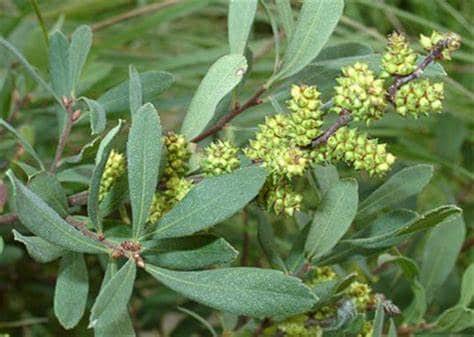
Sweetgale (Myrica gale)
Sweetgale can grow up to 90cm high with a 3m spread. Grows in full sun in moist to wet soil.
Sweetgale leaves are dark green and have a strong aromatic smell. In some parts of the world, sweetgale leaves are brewed into medicinal drinks to relieve stomach problems.
They are great to grow around lakes, streams, and wetlands to attract wildlife.
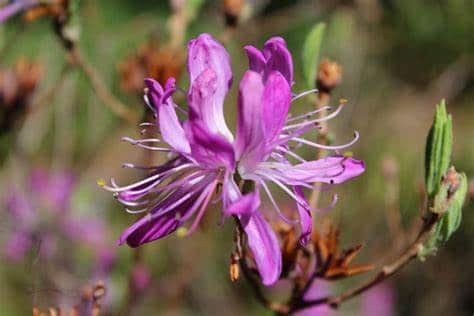
Rhodora (Rhododendron canadense)
Rhodora are generally low-lying shrubs but can grow up to 90cm in height and have a similar spread.
They like to grow around marshy areas and bogs. Because of this, growing them at home will require wet, acidic soils with full sun to partial shade.
Rhodora produces distinctly unique, pink flowers in early spring.
They are a great choice as landscaping plants near a pond or marshy area.
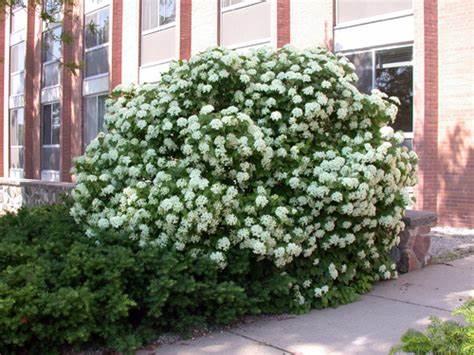
Arrowwood viburnum (Viburnum dentatum)
Arrowwood shrubs can grow quite tall and dense, reaching up to 3m in height with a similar spread.
They like to grow in full sun to partial shade, on moist, well-drained soils but are also tolerant of poor, rocky, clay soils.
Arrowwood got its name because Native Americans often used their straight branches to make arrow shafts.
Today it makes a beautiful landscaping shrub, it produces white flowers with a strong fragrance during spring. Arrowwoods are great hedges and privacy screens.
Their leaves during fall provide a great contrast as they turn to a beautiful purple and reddish color. Their small blue-colored berries also attract birds.
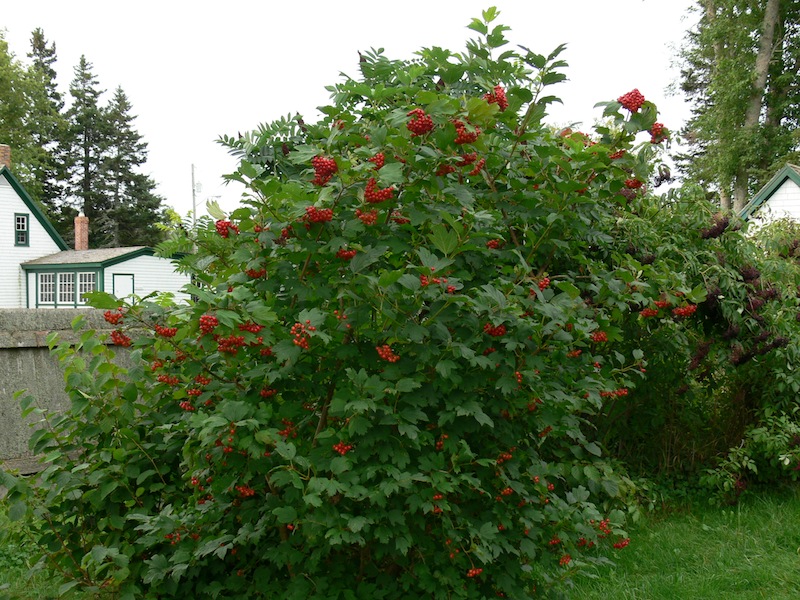
Highbush Cranberry (Viburnum trilobum – Americanum)
Highbush cranberries are not true cranberries but have many similarities.
They can grow from 3 to 4m in height with a similar spread. Highbush cranberries like moist, well-drained acidic soils but will grow in other types of soils.
They grow well in full sun and also manage in partial shade. Early in the summer, highbush cranberries will produce white flowers followed by bright red berries.
If you want to take one plant and multiply it, check out our guide on how to propagate highbush cranberry.
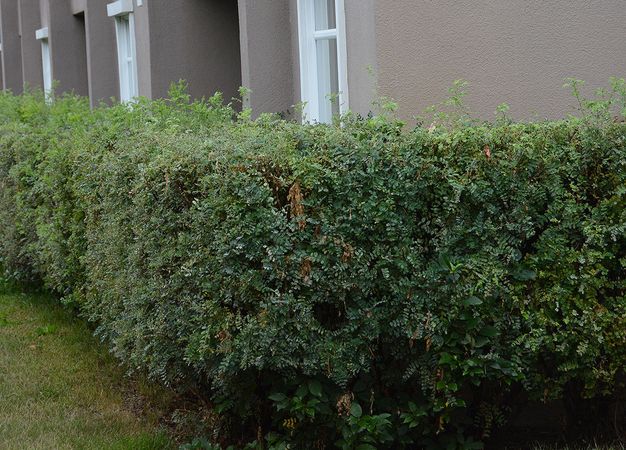
Siberian Peashrub (Caragana arborescens)
Siberian peashrub is a beautiful flowering shrub that grows very well as a hedge. It can grow as high as 6m and as wide as 4m.
It’s quite a sturdy plant that can grow well in clay, loam, or sandy soil, with either acidic or alkaline PH.
Additionally, it tolerates full sun just as much as partial shade.
Siberian peashrub produces lovely yellow flowers in the spring and later in the season creates small pea stalks.
If you want to take one plant and multiply it into many, check out my guide on how to Propagate Siberian Peashrubs.
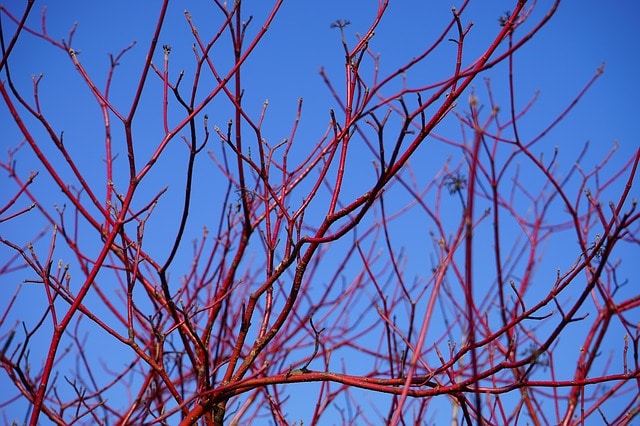
Redosier Dogwood (Cornus sericea)
Redosier Dogwood is a beautiful coral-red branched shrub that can grow up to 3m in height with half as much in spread.
You can grow in partial to full sun, on slightly acidic wet, humous-rich organic soils.
Redosier dogwood creates white flowers in the spring followed by white berries.
They are beautiful all year, Redosier dogwood is great landscaping shrubs.
For more details, check out our guide: How to Propagate Redosier Dogwood.
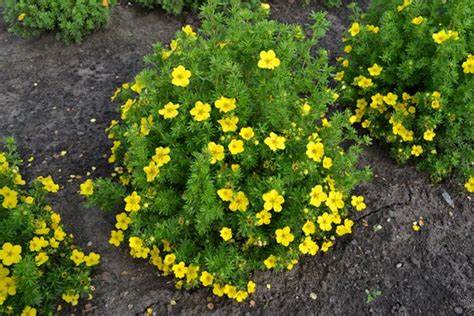
Shrubby Cinqfoil (Dasiphora fruticosa)
Shrubby Cinqfoil can grow up to 1m in height with a similar spread.
They grow in full sun to partial shade in well-drained wet, fertile soil but also tolerate drier and sandy soils.
The flowers bloom in early spring and last throughout the summer.
Because of this, shrubby cinqfoils are a wonderful landscaping flowering herb that will give a pop to any garden or park.
For more details, check out our guide: How to Propagate Shrubby Cinquefoil.
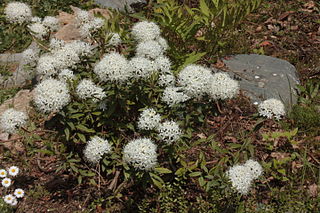
Labrador tea (Rhododendron tomentosum)
Labrador tea can grow up to 1m equally in height or spread. It grows in full sun to partial shade, likes acidic, moist soils.
Early in the spring, it produces a white flower and white cottony underleaf.
As the season progresses the leaf turns rusty brown underneath.
Labrador tea makes a great tea, it can be grown around your ponds or marshes and harvested at ease for homemade tea.
For more info, check out: How to Identify & Propagate Labrador Tea.
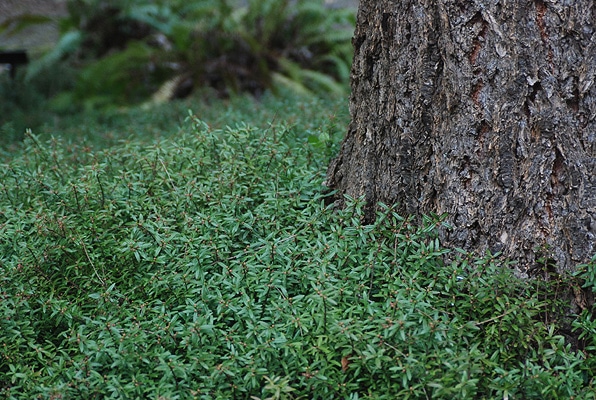
Cliff Green Pachistima (Pachistima canbyi)
Cliff Green Pachistima are small green shrubs that grow up to 50cm in height with a spread of 120cm.
They like to grow in full sun to partial shade on well-drained organic soils, preferably on slightly acidic rocky-sandy soil.
These shrubs have beautiful dark green foliage, which spreads in a ground-hugging habit.
Cliff Green Pachistima is a great landscaping plant to grow around your trees.
But wait! There’s more! Check out: Zone 2 Perennial Shrubs & Flowers.
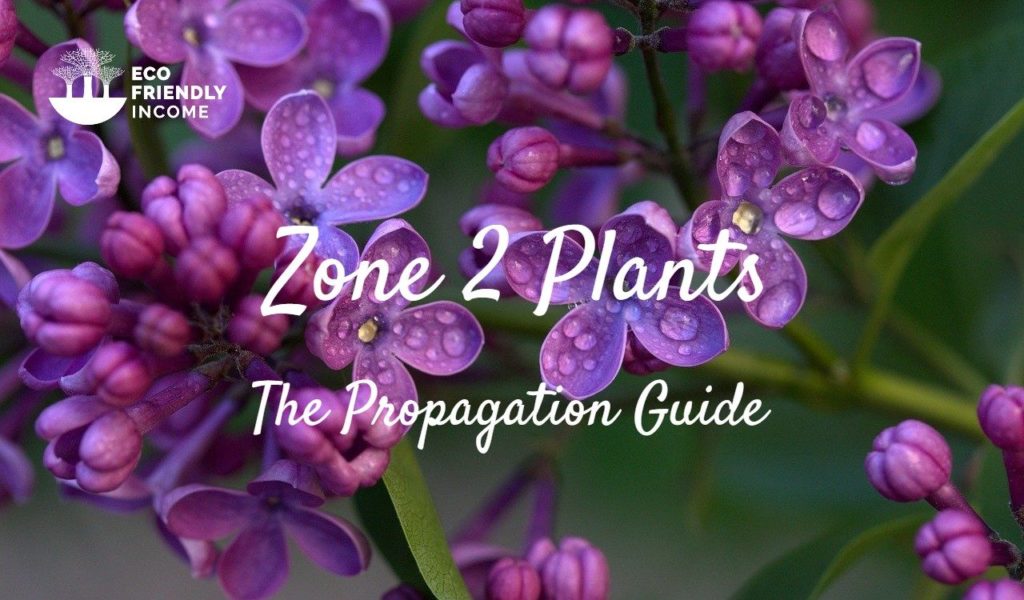
Bonus: If you’re willing to dig a little deeper, we have an index that lists all plants in the boreal forests. Plenty of boreal forest plants grow in hardiness zone 2, just double-check first.
Here are the quick links:

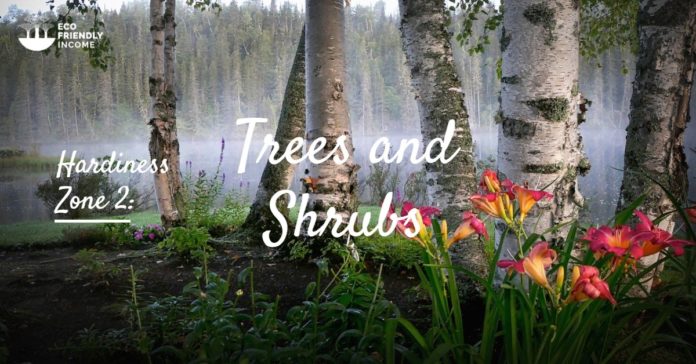
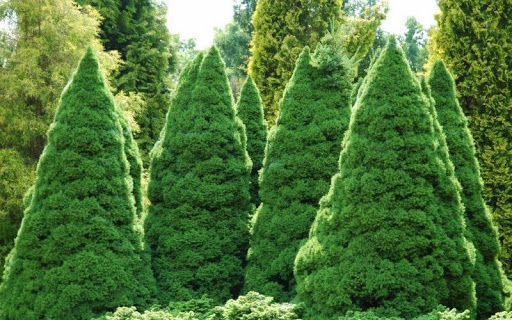
What a great list! Do you know if any of the shrubs would work well to create a sort of tall “wall like” hedge look? Sort of like a tall boxwood hedge?
Hi Katharina! Actually yes I do know a shrub that would work great as a hedge, the Siberian Peashrub (Caragana arborescens). I’m surprised I hadn’t added it in here as it’s hardy even in zone 2! I see these used all the time as hedges in my home region and they’re beautiful!
Hi, you did a wonderful list for the Northern Zones. Our house siding is green and I was looking for color. Would you by any chance have north-facing, partial to full shade low shrub suggestions? It would be great to have flowering or scented low shrubs. I thought perhaps potentillas? Maybe you would have better suggestions?
Thank you for your recommendations.
Good afternoon Julie! Yes I got a few ideas. You could try creeping phlox, red lobelia, wild violets, Canada columbine, forget-me-nots (Myosotis sylvatica) and I would say potentilla is a great choice too! Good luck